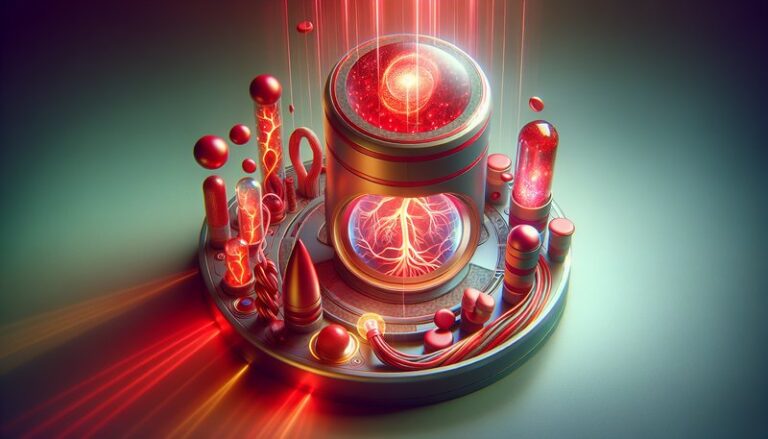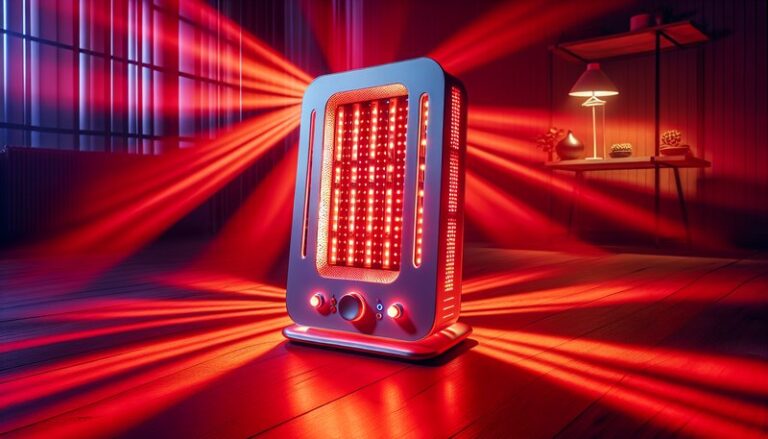Can Red Light Therapy Cause Hyperpigmentation?
Is red light therapy the miracle cure for skin issues, or could it potentially lead to hyperpigmentation?
Red light therapy has gained popularity for its ability to promote healing and rejuvenation of the skin. However, concerns regarding its safety and potential adverse effects, such as hyperpigmentation, often arise. This article will explore the connection between red light therapy and hyperpigmentation, discuss the benefits of the therapy, and provide insights on considerations and alternatives.
Key Takeaways
- Red light therapy can promote healing but may pose risks for certain skin types.
- Hyperpigmentation is unlikely with proper usage and precautions.
- Individual skin characteristics and history significantly influence therapy outcomes.
What is Red Light Therapy?
Red light therapy is a non-invasive treatment that uses specific wavelengths of red and near-infrared light to penetrate the skin. The therapy aims to stimulate cellular processes, boost collagen production, and enhance skin rejuvenation. Originally developed for wound healing, its applications have expanded to include anti-aging treatments, acne control, and reducing pain and inflammation.
The wavelengths commonly used in red light therapy typically range from 600 to 900 nanometers, which can penetrate various skin layers and are thought to promote healing by increasing circulation and stimulating cellular metabolism.
Understanding Hyperpigmentation
Hyperpigmentation is a common skin condition characterized by darkened patches of skin, often resulting from excess melanin production. Factors such as sun exposure, hormonal changes, injuries, and inflammation can trigger hyperpigmentation. While red light therapy is generally regarded as safe, individuals with certain skin types may worry about its effects on pigmentation.
What are the Benefits of Red Light Therapy?
Red light therapy offers several advantages that can enhance skin health and appearance. This section will delve into some of the key benefits associated with this treatment.
Promotes Skin Healing
Red light therapy has been shown to accelerate wound healing and improve the appearance of scars. Its ability to stimulate collagen production aids in the regeneration of skin cells, which can diminish the visibility of scars over time.
Reduces Inflammation
The anti-inflammatory properties of red light therapy make it effective in treating conditions like acne and rosacea. By reducing inflammation, the therapy can alleviate redness and promote a more even skin tone.
Enhances Collagen Production
As people age, collagen production decreases, leading to wrinkles and sagging skin. Red light therapy stimulates fibroblasts, leading to increased collagen synthesis and firmer, more youthful-looking skin.
Improves Skin Tone and Texture
Regular treatment with red light therapy can help improve overall skin tone and texture, minimizing the appearance of fine lines, wrinkles, and uneven pigmentation.
Is it Possible to Cause Hyperpigmentation with Red Light Therapy?
While some may fear that red light therapy can cause hyperpigmentation, evidence suggests that when used correctly, the therapy has a low risk of this adverse effect. However, it is essential to note that individual skin type and conditions can contribute to varied results.
What are the Advantages of Red Light Therapy in Context?
Using red light therapy can offer numerous advantages, including:
- Non-invasive approach: Unlike chemical peels or laser treatments, red light therapy lacks invasive procedures, minimizing recovery time.
- Minimal side effects: Most users experience few, if any, side effects, making it a safe option for many individuals.
- Versatile applications: It can treat various skin concerns, from acne to signs of aging, thus appealing to a broader audience.
What are the Disadvantages of Red Light Therapy in Context?
Despite its advantages, red light therapy does come with certain disadvantages, such as:
- Cost: Regular sessions can become expensive, especially if ongoing treatment is required.
- Time commitment: Each session can take several minutes, and multiple treatments may be needed for optimal results.
- Individual variability: Results can differ from person to person, leading to disappointment for some users.
What are the Things to Consider Before Starting Red Light Therapy?
Before starting red light therapy, several important factors should be considered to ensure safety and effectiveness.
Discover the full story Can Red Light Therapy Help Vitiligo?
Skin Type and Sensitivity
Understanding your skin type is crucial. Individuals with darker skin may be at greater risk for hyperpigmentation if they experience excess heat or over-treatment.
Existing Skin Conditions
Consulting a dermatologist is essential, particularly for those with existing skin conditions or a history of hyperpigmentation. A professional can provide tailored advice and effective treatment plans.
Equipment Quality
The quality of red light therapy devices varies significantly. Professional-grade devices typically offer safer and more effective treatment than low-quality home devices.
What are the Alternatives to Red Light Therapy?
If concerns about red light therapy linger, several alternatives can offer similar benefits for skin health without the same risks.
Chemical Peels
Chemical peels use acids to exfoliate the top layer of skin, improving texture and reducing pigmentation. They can be effective but require downtime for recovery.
Laser Treatments
Lasers offer targeted treatments for hyperpigmentation, stimulating collagen and improving skin appearance. However, they can be costly and involve more significant side effects.
Microneedling
This minimally invasive procedure involves tiny needles that stimulate collagen production and improve skin texture. It also has healing properties but may involve some discomfort and downtime.
Conclusion: Is it Recommended to Pursue Red Light Therapy?
Red light therapy is a valuable tool in the skincare arsenal, known for its healing and rejuvenating benefits. While concerns regarding hyperpigmentation exist, when used judiciously and correctly, the therapy poses minimal risks for most individuals. Consulting with a skincare professional can help determine if this treatment is suitable for your specific needs.
Dive deeper into Best Red Light Therapy?
Frequently Asked Questions
Can red light therapy cause pigmentation changes?
Generally, red light therapy does not cause pigmentation changes. However, individuals with darker skin types may need to exercise caution.
How often should I undergo red light therapy?
The frequency of treatments can vary by individual preferences and goals. Most practitioners recommend starting with sessions 2-3 times a week for optimal results.
Are there side effects associated with red light therapy?
Most people experience little to no side effects. If side effects do occur, they tend to be mild, such as temporary redness or tenderness.
Can red light therapy help with acne?
Yes, red light therapy can reduce acne by decreasing inflammation and promoting healing in the skin. It is often combined with other treatments for better results.





